- myFICO® Forums
- FICO Scoring and Other Credit Topics
- Understanding FICO® Scoring
- Re: What kind of hit for carrying balances [update...
- Subscribe to RSS Feed
- Mark Topic as New
- Mark Topic as Read
- Float this Topic for Current User
- Bookmark
- Subscribe
- Mute
- Printer Friendly Page
What kind of hit for carrying balances [update 7/3]
Is your credit card giving you the perks you want?
Browse credit cards from a variety of issuers to see if there's a better card for you.
- Mark as New
- Bookmark
- Subscribe
- Mute
- Subscribe to RSS Feed
- Permalink
- Report Inappropriate Content
Re: What kind of hit for carrying balances [update 6/16]
@SouthJamaica wrote:
@NRB525 wrote:
My TU did not move last year with 2 INQ either, and EQ moved -7 for each INQ on two cards.
I think you have no score change due to letting all the cards report. The drop is only from the INQ.
Thanks for running the experiment, I'm not surprised at the result
I'm starting to think you're right NRB525... The EQ 11 point drop came in the same alert that advised me of the inquiry.
The EX 2 point drop, however, seemed to coincide with the 49% on the Discover Card.
But so far it looks like going from .3% overall utilization to 3.9% utilization had basically zero effect on my FICO scores.
Now I'm going to be reducing it back to where it was, to see if that has any effect.
That unfortunately doesn't mean much with the way updates get rolled up with regards to the drop ![]() . I wouldn't expect .3 to 3.9% to produce a meaningful change personally.
. I wouldn't expect .3 to 3.9% to produce a meaningful change personally.
Can't really accurately test things with a very busy report, though I am following this thread with interest. Figuring I'm going to be pretty much sidelined from testing for six months post mortgage and post closing app spree. Might get some AAOA tests in as new tradelines report that don't affect my mix of credit though I have not much idea how the mortgage will factor in which will may skew the installment loan utilization testing I'm doing, but that's about it.





















- Mark as New
- Bookmark
- Subscribe
- Mute
- Subscribe to RSS Feed
- Permalink
- Report Inappropriate Content
Re: What kind of hit for carrying balances [update 6/16]
@Revelate wrote:
@SouthJamaica wrote:
@NRB525 wrote:
My TU did not move last year with 2 INQ either, and EQ moved -7 for each INQ on two cards.
I think you have no score change due to letting all the cards report. The drop is only from the INQ.
Thanks for running the experiment, I'm not surprised at the result
I'm starting to think you're right NRB525... The EQ 11 point drop came in the same alert that advised me of the inquiry.
The EX 2 point drop, however, seemed to coincide with the 49% on the Discover Card.
But so far it looks like going from .3% overall utilization to 3.9% utilization had basically zero effect on my FICO scores.
Now I'm going to be reducing it back to where it was, to see if that has any effect.
That unfortunately doesn't mean much with the way updates get rolled up with regards to the drop
. I wouldn't expect .3 to 3.9% to produce a meaningful change personally.
Can't really accurately test things with a very busy report, though I am following this thread with interest. Figuring I'm going to be pretty much sidelined from testing for six months post mortgage and post closing app spree. Might get some AAOA tests in as new tradelines report that don't affect my mix of credit though I have not much idea how the mortgage will factor in which will may skew the installment loan utilization testing I'm doing, but that's about it.
I cannot get into the 'mix of credit' features they're looking for. I really don't have any wish to add instalment loans if I can avoid them.
There's just so far I'm willing to go to boost my credit scores. And structural borrowing is not where I want to go.
Long term borrowing is how I got into trouble in the first place.
I'm no longer impressed by the financial industry's hype.
To me the credit cards are a temporary passing thing, I pay them down to zero. And that's the way I like it.
Even letting utilization get up to 3.9% made me nervous. I don't like banks having their hooks in me.



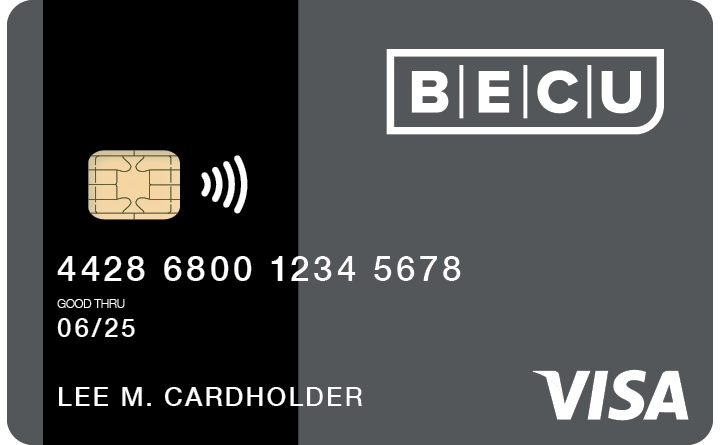







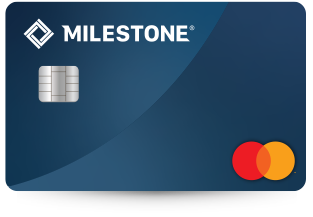


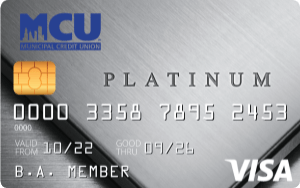





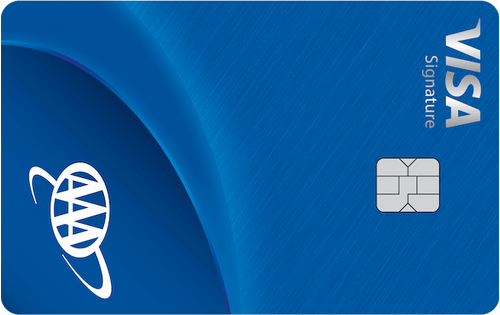





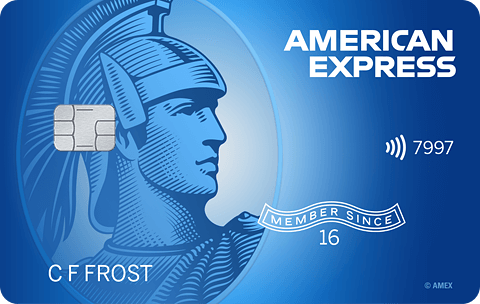




Total revolving limits 569520 (505320 reporting) FICO 8: EQ 689 TU 684 EX 682
- Mark as New
- Bookmark
- Subscribe
- Mute
- Subscribe to RSS Feed
- Permalink
- Report Inappropriate Content
Re: What kind of hit for carrying balances [update 6/16]
@Revelate wrote:
That unfortunately doesn't mean much with the way updates get rolled up with regards to the drop
. I wouldn't expect .3 to 3.9% to produce a meaningful change personally.
Well, as a test of letting more cards report, keeping the utilization to 0.3% --> 3.9% is mandatory. Otherwise the test is throwing more utilization on the mix, which will certainly quickly lead to more points lost. The INQ is pretty easiliy isolated because of the timing.
I think the SJ test is important for those who always want to see all cards zero except 1. In a stable file, with no utilization changes, there should be little to no change for letting more cards report. The temporary boost that "all cards but 1" sees is probably from the overall decline in utilization percentage for all cards in total, not so much the reduction in number of cards reporting.
Oct 2014 $46k on $127k 36% util EQ 722 TU 727 EX 727
April 2018 $18k on $344k 5% util EQ 806 TU 810 EX 812
Jan 2019 $7.6k on $360k EQ 832 TU 839 EX 831
March 2021 $33k on $312k EQ 796 TU 798 EX 801
May 2021 Paid all Installments and Mortgages, one new Mortgage EQ 761 TY 774 EX 777
April 2022 EQ=811 TU=807 EX=805 - TU VS 3.0 765

- Mark as New
- Bookmark
- Subscribe
- Mute
- Subscribe to RSS Feed
- Permalink
- Report Inappropriate Content
Re: What kind of hit for carrying balances [update 6/16]
@NRB525 wrote:
@Revelate wrote:
That unfortunately doesn't mean much with the way updates get rolled up with regards to the drop
. I wouldn't expect .3 to 3.9% to produce a meaningful change personally.
Well, as a test of letting more cards report, keeping the utilization to 0.3% --> 3.9% is mandatory. Otherwise the test is throwing more utilization on the mix, which will certainly quickly lead to more points lost. The INQ is pretty easiliy isolated because of the timing.
I think the SJ test is important for those who always want to see all cards zero except 1. In a stable file, with no utilization changes, there should be little to no change for letting more cards report. The temporary boost that "all cards but 1" sees is probably from the overall decline in utilization percentage for all cards in total, not so much the reduction in number of cards reporting.
I've wondered if, and if so why, the "all cards but 1" rule would work































Total revolving limits 569520 (505320 reporting) FICO 8: EQ 689 TU 684 EX 682
- Mark as New
- Bookmark
- Subscribe
- Mute
- Subscribe to RSS Feed
- Permalink
- Report Inappropriate Content
Re: What kind of hit for carrying balances [update 6/16]
@SouthJamaica wrote:
@NRB525 wrote:
@Revelate wrote:
That unfortunately doesn't mean much with the way updates get rolled up with regards to the drop
. I wouldn't expect .3 to 3.9% to produce a meaningful change personally.
Well, as a test of letting more cards report, keeping the utilization to 0.3% --> 3.9% is mandatory. Otherwise the test is throwing more utilization on the mix, which will certainly quickly lead to more points lost. The INQ is pretty easiliy isolated because of the timing.
I think the SJ test is important for those who always want to see all cards zero except 1. In a stable file, with no utilization changes, there should be little to no change for letting more cards report. The temporary boost that "all cards but 1" sees is probably from the overall decline in utilization percentage for all cards in total, not so much the reduction in number of cards reporting.
I've wondered if, and if so why, the "all cards but 1" rule would work
It works because the people who are implementing it are going from a higher utilization overall when multiple cards have a balance, to a lower utilization on all cards overall when only one is reporting a small balance ![]()
Those who maintain their file at "all cards zero but one" are also making sure they never commit the mortal sin of missing a payment. So as they are rebuilding their file, their micromanagement of the card accounts keeps stringing together month after month of perfect payment history, which raises the score over time. Of course, you could get there by just paying the cards that report by the payment due date, and get the same string of on-time payments, which is the real driver of an improved credit score.
All cards but one is not the real driver of the score improvement: it is the resulting on-time payments that happen.
Oct 2014 $46k on $127k 36% util EQ 722 TU 727 EX 727
April 2018 $18k on $344k 5% util EQ 806 TU 810 EX 812
Jan 2019 $7.6k on $360k EQ 832 TU 839 EX 831
March 2021 $33k on $312k EQ 796 TU 798 EX 801
May 2021 Paid all Installments and Mortgages, one new Mortgage EQ 761 TY 774 EX 777
April 2022 EQ=811 TU=807 EX=805 - TU VS 3.0 765

- Mark as New
- Bookmark
- Subscribe
- Mute
- Subscribe to RSS Feed
- Permalink
- Report Inappropriate Content
Re: What kind of hit for carrying balances [update 6/16]
@NRB525 wrote:
@SouthJamaica wrote:
@NRB525 wrote:
@Revelate wrote:
That unfortunately doesn't mean much with the way updates get rolled up with regards to the drop
. I wouldn't expect .3 to 3.9% to produce a meaningful change personally.
Well, as a test of letting more cards report, keeping the utilization to 0.3% --> 3.9% is mandatory. Otherwise the test is throwing more utilization on the mix, which will certainly quickly lead to more points lost. The INQ is pretty easiliy isolated because of the timing.
I think the SJ test is important for those who always want to see all cards zero except 1. In a stable file, with no utilization changes, there should be little to no change for letting more cards report. The temporary boost that "all cards but 1" sees is probably from the overall decline in utilization percentage for all cards in total, not so much the reduction in number of cards reporting.
I've wondered if, and if so why, the "all cards but 1" rule would work
It works because the people who are implementing it are going from a higher utilization overall when multiple cards have a balance, to a lower utilization on all cards overall when only one is reporting a small balance
Those who maintain their file at "all cards zero but one" are also making sure they never commit the mortal sin of missing a payment. So as they are rebuilding their file, their micromanagement of the card accounts keeps stringing together month after month of perfect payment history, which raises the score over time. Of course, you could get there by just paying the cards that report by the payment due date, and get the same string of on-time payments, which is the real driver of an improved credit score.
All cards but one is not the real driver of the score improvement: it is the resulting on-time payments that happen.
Agreed but it does factor into instant-in-time score maximization which most of us should / do care about when it comes to application time at least for anything we care about. Absolutely payment history is king, but if you solve that by not missing payments, revolving utilization is the next thing to tackle from a scoring perspective.





















- Mark as New
- Bookmark
- Subscribe
- Mute
- Subscribe to RSS Feed
- Permalink
- Report Inappropriate Content
Re: What kind of hit for carrying balances [update 6/16]
Last month I started doing the same thing as SJamaica. I let several cards report balances that brought my total reported at 3%. Like SJ - I get nervous when I see UTIL reported that high after the years of agony I had with credit cards being maxed out.
In May, I let several cards report their balances instead of 1. My myFICO scores on 5-20-15 were EQ: 790 TU: 796 EX: 786. In June, I PIF all cards except my HD card that I purchased a riding mower on for $1,350. So far, twice reported balances have dropped down to $1,150 on the HD card and a total of $1,250 total UTIL. That is still about 10% of my HD since my CL is $10k. So, over the next 4 weeks as the next round of cards reported $0 balances and my UTIL went to 1% again, my scores on 6/16/15 were EQ: 793 TU:810 EX:791 so they did go up. Today I woke up and signed into creditchecktotal and for some stupid reason my EX dropped to 787, which is the lowest since the end of May.
I guess bottom line is even though I have the HD card reporting every month, I'm paying $100 each month towards it instead of the minimum $25, reported CLI on my Discover card went from $11,500 to $13,500, my reported balances went back to $0, and EX drops to 787 today?
What I do is SD my debit card and pay everything on a rewards card and then pay them off. I have them in a rotation where each month I will show extra love to one of the cards then PIF before they report. This past month I used my US Bank Cash + card as that one, right now it has a balance of $785 out of a $5k limit. I was going to PIF that on 6/26 and the close date is 7/5. I've also been told that US Bank reports the end of each month no matter what the close date is. I'm thinking of trying an experiment and either letting the full $785 report or maybe report like $350 or maybe report $100. I don't want the other two scores to drop like EX did. My goal was to tweak and get all 3 of them over 800.
Also soon to be reported is the CLI on my AMEX Blue that went from $2k to $6k. I wonder if that will be a positive or a negative for me since my UTIL is low to begin with.
- Mark as New
- Bookmark
- Subscribe
- Mute
- Subscribe to RSS Feed
- Permalink
- Report Inappropriate Content
Re: What kind of hit for carrying balances [update 6/16]
@Revelate wrote:
@NRB525 wrote:
@SouthJamaica wrote:
@NRB525 wrote:
@Revelate wrote:
That unfortunately doesn't mean much with the way updates get rolled up with regards to the drop
. I wouldn't expect .3 to 3.9% to produce a meaningful change personally.
Well, as a test of letting more cards report, keeping the utilization to 0.3% --> 3.9% is mandatory. Otherwise the test is throwing more utilization on the mix, which will certainly quickly lead to more points lost. The INQ is pretty easiliy isolated because of the timing.
I think the SJ test is important for those who always want to see all cards zero except 1. In a stable file, with no utilization changes, there should be little to no change for letting more cards report. The temporary boost that "all cards but 1" sees is probably from the overall decline in utilization percentage for all cards in total, not so much the reduction in number of cards reporting.
I've wondered if, and if so why, the "all cards but 1" rule would work
It works because the people who are implementing it are going from a higher utilization overall when multiple cards have a balance, to a lower utilization on all cards overall when only one is reporting a small balance
Those who maintain their file at "all cards zero but one" are also making sure they never commit the mortal sin of missing a payment. So as they are rebuilding their file, their micromanagement of the card accounts keeps stringing together month after month of perfect payment history, which raises the score over time. Of course, you could get there by just paying the cards that report by the payment due date, and get the same string of on-time payments, which is the real driver of an improved credit score.
All cards but one is not the real driver of the score improvement: it is the resulting on-time payments that happen.
Agreed but it does factor into instant-in-time score maximization which most of us should / do care about when it comes to application time at least for anything we care about. Absolutely payment history is king, but if you solve that by not missing payments, revolving utilization is the next thing to tackle from a scoring perspective.
I'm convinced that having 1 account report, instead of none, does pay off: http://ficoforums.myfico.com/t5/Understanding-FICO-Scoring/FICO-scores-with-1-vs-2-cards-out-of-9-wi...































Total revolving limits 569520 (505320 reporting) FICO 8: EQ 689 TU 684 EX 682
- Mark as New
- Bookmark
- Subscribe
- Mute
- Subscribe to RSS Feed
- Permalink
- Report Inappropriate Content
Re: What kind of hit for carrying balances [update 6/16]
@SouthJamaica wrote:I'm convinced that having 1 account report, instead of none, does pay off: http://ficoforums.myfico.com/t5/Understanding-FICO-Scoring/FICO-scores-with-1-vs-2-cards-out-of-9-wi...
Absolutely. A couple of months ago I had all accounts report $0 for a week or so. I really got whacked to the tune of about 12-18 points, depending on the model and CRA. Thankfully, as soon as one account reported again, I got every single point back.
Sept 2024: EX8: 847; EQ8: 850; TU8: 848 -- Middle Mortgage Score: 821
In My Wallet: Discover $73.7K; Cap1 Venture $51.7K; Amex ED $38K; Amex Optima $2.5K; Amex Delta Gold $18K; Citi Costco $24.5K; Cap1 Plat $8.4K; Barclay $7K; Chase Amazon $6K; BoA Plat $21.6K; Citi TY Pref $22K; US Bank $4K; Dell $5K; Care Credit $6.5K. Total Revolving CL: $300K+
My UTIL: Less than 1% - Only allow about $20 a month to report, on one account. .
- Mark as New
- Bookmark
- Subscribe
- Mute
- Subscribe to RSS Feed
- Permalink
- Report Inappropriate Content
Re: What kind of hit for carrying balances [update 6/16]
@Revelate wrote:
@NRB525 wrote:
All cards but one is not the real driver of the score improvement: it is the resulting on-time payments that happen.
Agreed but it does factor into instant-in-time score maximization which most of us should / do care about when it comes to application time at least for anything we care about. Absolutely payment history is king, but if you solve that by not missing payments, revolving utilization is the next thing to tackle from a scoring perspective.
We are in agreement, however then you have to still consider "How do I get to that instant in time maximization I want on the day I app?" And the answer is, you bring down utilization (to zero) on all cards but one, and leave a small total utilization as the remainder of all cards ![]() Can you see the incompleteness in the shorthand "all cards zero but one"? It isn't the one card that gives the score optimization, it's the low utilization at that set of reported balances, specifically one low balance only. You can get to the same place with 3 or 4 cards reporting, as long as that total utilization is the same as if 1 card only reported.
Can you see the incompleteness in the shorthand "all cards zero but one"? It isn't the one card that gives the score optimization, it's the low utilization at that set of reported balances, specifically one low balance only. You can get to the same place with 3 or 4 cards reporting, as long as that total utilization is the same as if 1 card only reported.
And yes, payment on time is primary, then you can work with utilization to further improve score ( or realize that using credit is what this is all about, and so as utility / utilization of credit goes up, the score will come down by some factor). Virtually everything else is noise, including AAoA because you can't really control them.
Oct 2014 $46k on $127k 36% util EQ 722 TU 727 EX 727
April 2018 $18k on $344k 5% util EQ 806 TU 810 EX 812
Jan 2019 $7.6k on $360k EQ 832 TU 839 EX 831
March 2021 $33k on $312k EQ 796 TU 798 EX 801
May 2021 Paid all Installments and Mortgages, one new Mortgage EQ 761 TY 774 EX 777
April 2022 EQ=811 TU=807 EX=805 - TU VS 3.0 765
